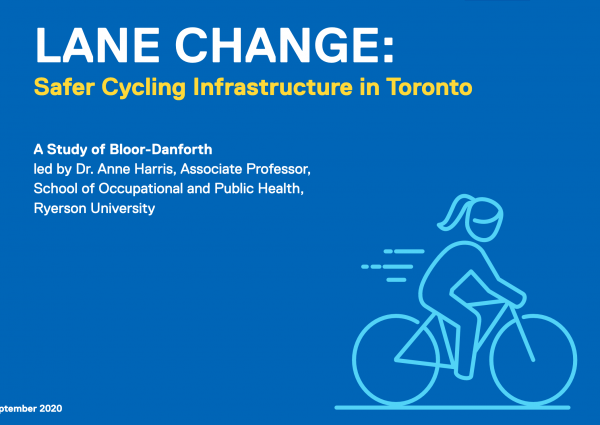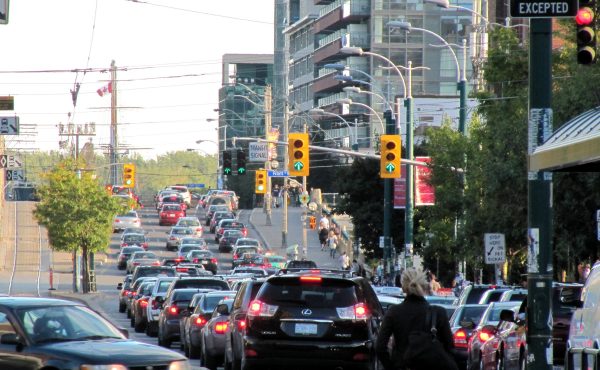City Building Ryerson has released a new report, Lane Change: Safer cycling infrastructure for Toronto, based on research led by Dr. Anne Harris of Ryerson University’s School of Occupational and Public Health and funded by the Metcalf Foundation.
Applying a public health lens to road safety, the study quantifies the potential injury impacts of separated cycling infrastructure along Bloor-Danforth. It takes an epidemiological approach to estimate how different cycling infrastructure designs (cycle tracks, protected lanes, painted lanes and no infrastructure) could impact injuries and fatalities, both in the context of the global COVID-19 pandemic and in general.
Perhaps not surprisingly, fully separated cycle tracks were shown to prevent the most potential injuries and fatalities when compared to other types of cycling facilities (like painted lanes and partially separated cycle tracks). What’s new is that the study quantifies the potential impact with real numbers, based on local evidence, to support informed advocacy and decision making regarding dedicated and protected cycling infrastructure. Key findings include:
- Fully separated cycling facilities (like cycle tracks) could reduce the number of injuries along Bloor-Danforth by 89%. This could mean 153 to 182 fewer serious injuries along the corridor over the next decade, depending on ridership
- Fully separated cycle tracks are significantly safer and prevent more injuries than other types of cycling infrastructure, like partially separated lanes and painted lanes
The research offers insights for cycling infrastructure implementation across the city — including the popular new (temporary) lanes on Bloor-Danforth, rolled out as part of the ActiveTO program. The authors note that the availability of safer cycling infrastructure during the COVID-19 pandemic could have a “safety in numbers” effect, attracting higher cycling volumes and preventing even more injuries. On the flipside, removing temporary cycling infrastructure could have a “bait and switch” effect, actually leading to more injuries; temporary infrastructure attracts new users to the route, but when this protection is removed, the number of injuries could increase from pre-implementation levels.
The findings of Lane Change are of importance as Toronto continues to expand its bicycle network, and considers the future of temporary ActiveTO infrastructure (Council is set to vote on the fate of temporary ActiveTO bikeways in late 2021). The report’s short-term action items include:
- Push City Council to make existing ActiveTO bikeways, including Bloor-Danforth, permanent and fully separated
- In collaboration with communities, support the further expansion of a connected, equitably distributed network of fully separated cycling facilities throughout the city
You can download the report on the City Building Ryerson website to learn about the research project, plus highlighted takeaways, a calculation toolkit and policy action items.




